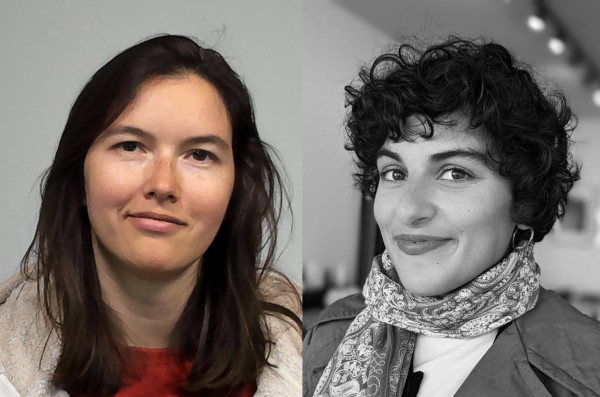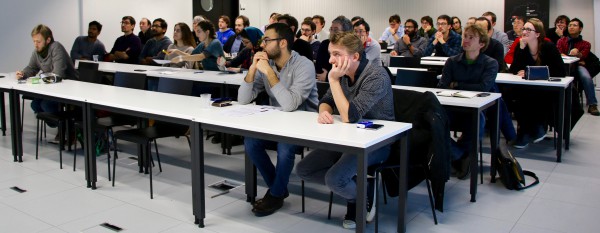MARVEL Junior Seminar — March 2025

Each seminar consists of two presentations of 25 minutes each, allowing to present on a scientific question in depth, followed by time for discussion. The discussion is facilitated and timed by the chair.
Pizzas will be served after the seminars in order to facilitate discussions based on the talks just presented.
Onsite participation
12:15 — Seminars take place in EPFL room Coviz2 (MED 2 1124)
~13:15 — Pizzas will be served in the MED building atrium, second floor
Online participation
Starting at 12:15:
https://epfl.zoom.us/j/68368776745
Password: 1923

Abstracts
Talk 1 — Unlocking the potential of lithium thiophosphate: atomistic insights on its surface reactivity
Hanna Türk, Michele Ceriotti
Laboratory of computational science and modelling (COSMO), EPFL
Lithium thiophosphate (LPS) emerges as a promising solid electrolyte for the next-generation of lithium ion batteries. However, the high reactivity of LPS with common contaminants such as atmospheric water, solvents used for preparation, and common electrode materials hinders commercialization of the cells. The unknown structure, morphology, and chemical behavior of LPS’s surface prevents strategic solutions to this problem.
Here, we employ a machine learning interatomic potential to gain fundamental, atomistic understanding on the mechanical and chemical properties of an LPS surface in contact with water. Our focus lies first on the identification of relevant surface complexions formed by surface reconstructions, which define the form of the reactive sites and thus the degradation mechanism of the material with relevant contaminants. Metadynamics and nudged-elastic band simulations then reveal the complex reactivity of the LPS surface with water. This allows us to identify the surface moieties that play a relevant role in the material’s degradation.
Talk 2 — Modeling hydrogen-metal interactions from first principles
Claire Paetsch, Anirudh Raju Natarajan
Laboratory of materials design and simulations (MADES), EPFL
Laves-phase intermetallic hydrides (AB2) are promising materials for stationary hydrogen storage due to their high volumetric density. However, identifying materials that reversibly store large amounts of hydrogen under ambient conditions remains a challenge.
Using first-principles methods, we model the pressure-composition isotherms (PCTs) for interstitial hydrogen absorption in ZrV2 and ZrMo2. Our results align with experimental data and reveal hydrogen interactions that are difficult to observe experimentally due to hydrogen’s low mass.
Contrary to previous assumptions, we find that hydrogen does not uniformly prefer a single interstitial site in binary Laves phases. Instead, its occupancy varies based on the local metal chemistry. This insight leads to a new strategy for designing high-capacity Laves-phase hydrides: rather than focusing on a single favored site type, we show that enabling hydrogen access to multiple site types is more effective. Applying this approach, our high-throughput site dissolution energy calculations identify five promising candidates with enhanced hydrogen capacities.
Check the list of the next MARVEL Junior Seminars here.
Low-volume newsletters, targeted to the scientific and industrial communities.
Subscribe to our newsletter